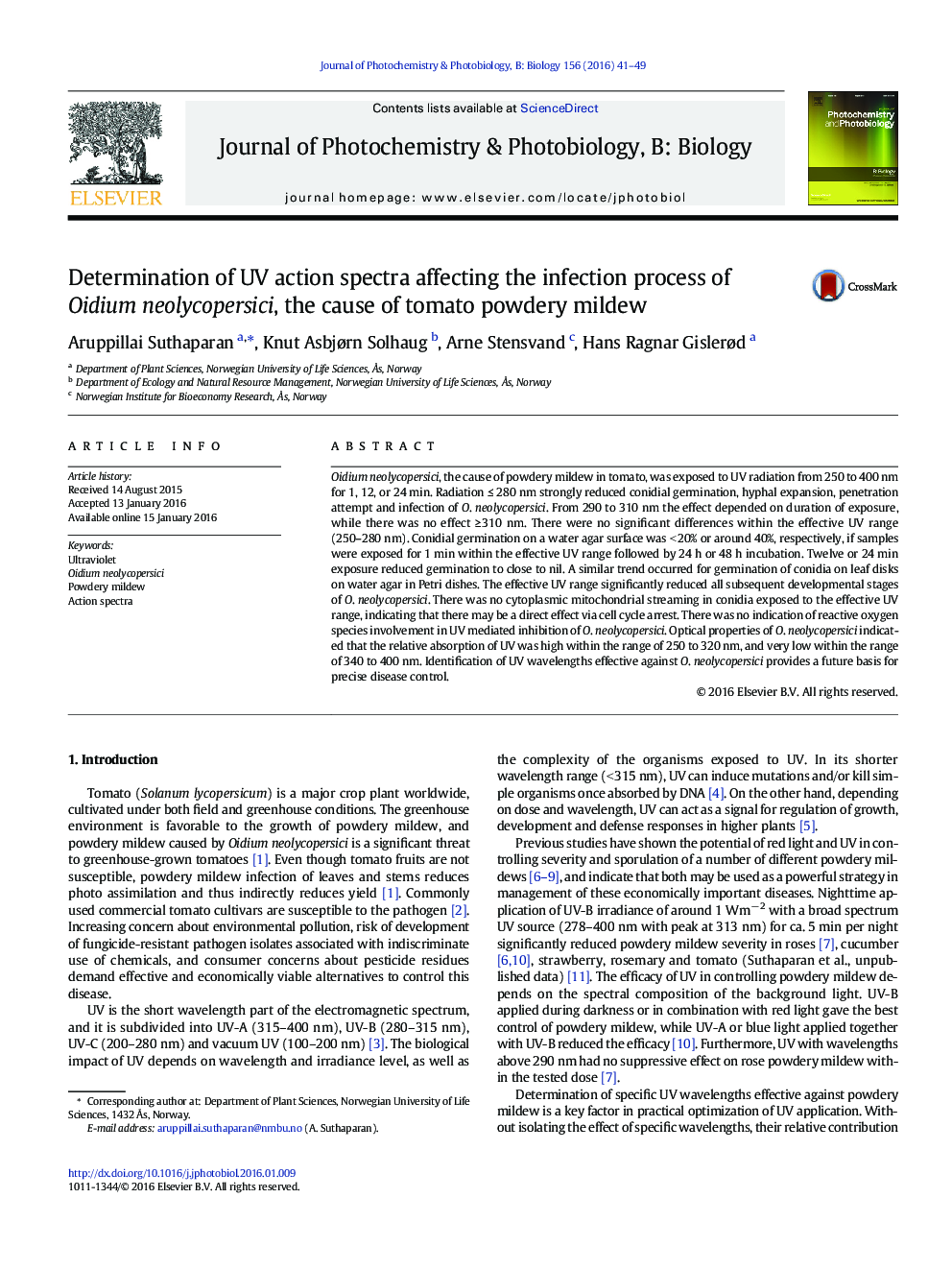| کد مقاله | کد نشریه | سال انتشار | مقاله انگلیسی | نسخه تمام متن |
|---|---|---|---|---|
| 29519 | 44416 | 2016 | 9 صفحه PDF | دانلود رایگان |

• Wavelength dependent UV efficacy for Oidium neolycopersici infection is proposed.
• UV range of 250–280 nm effectively reduces infection process of O. neolycopersici.
• No indication of reactive oxygen species involvement in UV mediated inhibition
• No cytoplasmic mitochondrial streaming in conidia exposed to effective UV range
Oidium neolycopersici, the cause of powdery mildew in tomato, was exposed to UV radiation from 250 to 400 nm for 1, 12, or 24 min. Radiation ≤ 280 nm strongly reduced conidial germination, hyphal expansion, penetration attempt and infection of O. neolycopersici. From 290 to 310 nm the effect depended on duration of exposure, while there was no effect ≥ 310 nm. There were no significant differences within the effective UV range (250–280 nm). Conidial germination on a water agar surface was < 20% or around 40%, respectively, if samples were exposed for 1 min within the effective UV range followed by 24 h or 48 h incubation. Twelve or 24 min exposure reduced germination to close to nil. A similar trend occurred for germination of conidia on leaf disks on water agar in Petri dishes. The effective UV range significantly reduced all subsequent developmental stages of O. neolycopersici. There was no cytoplasmic mitochondrial streaming in conidia exposed to the effective UV range, indicating that there may be a direct effect via cell cycle arrest. There was no indication of reactive oxygen species involvement in UV mediated inhibition of O. neolycopersici. Optical properties of O. neolycopersici indicated that the relative absorption of UV was high within the range of 250 to 320 nm, and very low within the range of 340 to 400 nm. Identification of UV wavelengths effective against O. neolycopersici provides a future basis for precise disease control.
Journal: Journal of Photochemistry and Photobiology B: Biology - Volume 156, March 2016, Pages 41–49